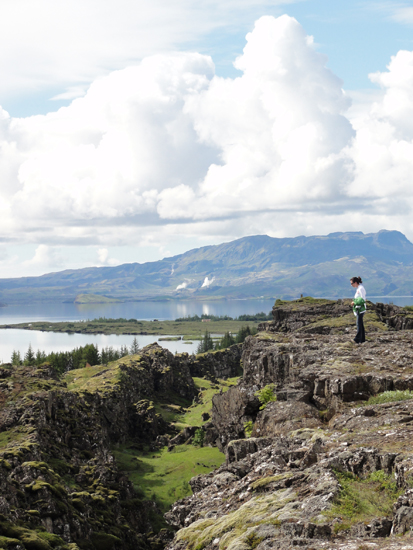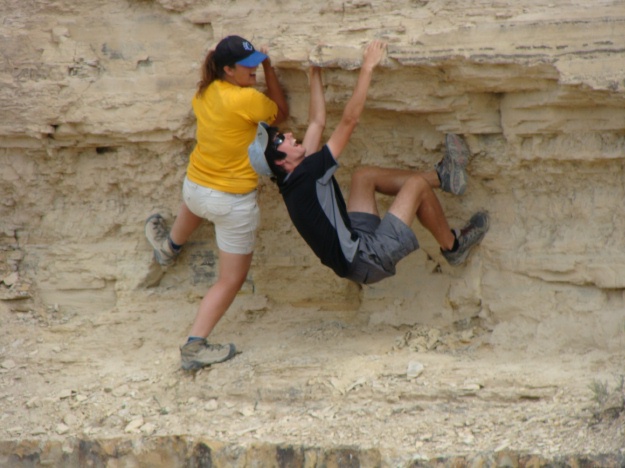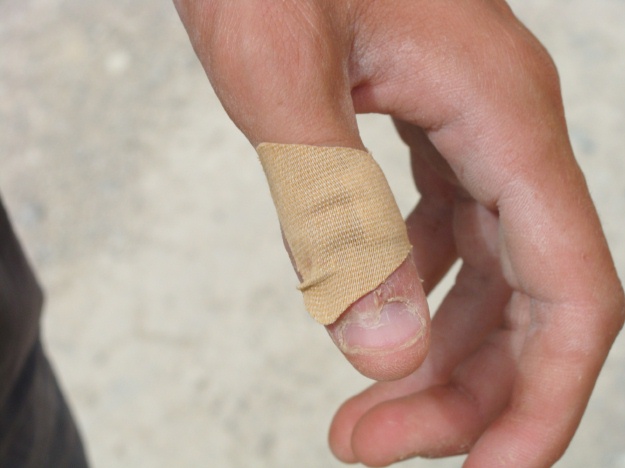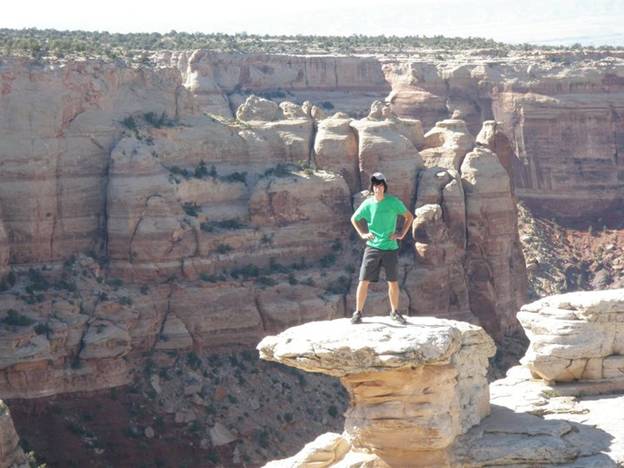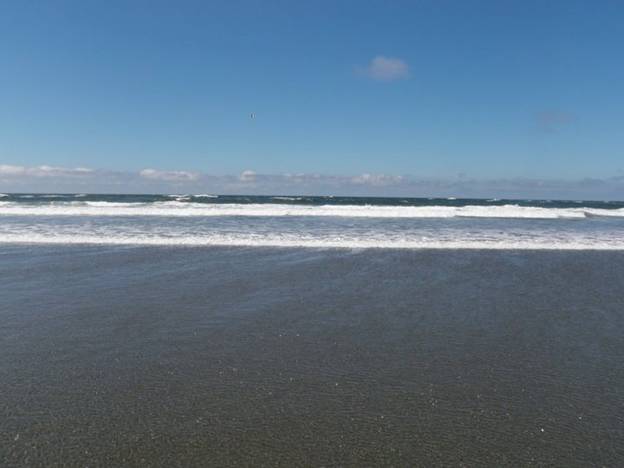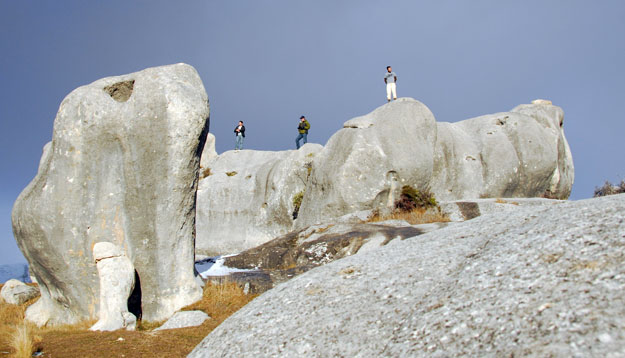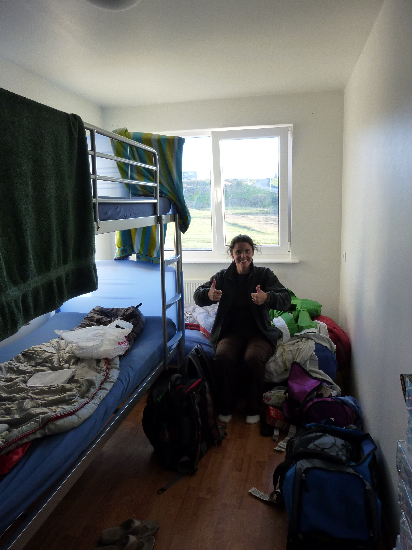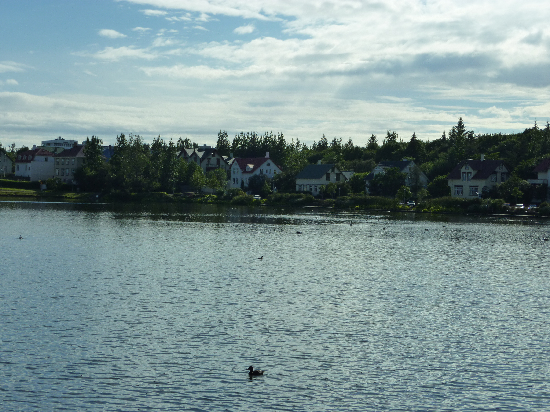
Odell Lake in the early morning hours.
The dedicated team of Wooster Geologists, Sarah Appleton, Stephanie Jarvis, and Dr. Greg Wiles met up with the sleep deprived team of Geologists from The University of Cincinnati, Bill Honsaker, Gianna Evans, and Dr. Tom Lowell. The goal of day one was to field test equipment destined for a trip to Greenland, acquire lake cores for the Climate Change class at The College of Wooster and map the lake using geophysics, a branch of earth science dealing with the physical processes and phenomena occurring especially in the earth and in its vicinity.
Odell Lake is located in Holmes County, Ohio and is a natural lake that was formed by a glacier. Portions of the glacier broke off and melted forming a kettle lake. In the case of Odell Lake three pieces of a glacier broke off during the termination of the last ice age, about 15,000 years ago, and melted. As a result Odell Lake has three basins. The first basin is the largest but also the shallowest, the second basin is smaller and deeper and the westernmost basin is the smallest and deepest attaining almost 30 feet in depth.
Our first day began early in the morning in an attempt to beat the heat of the day. Once we arrived at the lake we began to unload our supplies. Most of our equipment came “some assembly required”.

A whole new meaning to some assembly required.
After several hours of assembling the necessary tools and equipment we were ready to divvy up jobs. Sarah and Gianna were assigned to the geophysics boat. Gianna was the geophysics specialist and Sarah was the boat driver (Gianna was a brave soul because this was Sarah’s first time driving this type of boat). Stephanie, Dr. Wiles, Bill, and Dr. Lowell boarded the coring vessel for her maiden voyage.

Sarah is learning to drive the boat and Gianna is ready, just in case, with the paddle.
Sarah and Gianna began crossing the lake mapping the depth and using sonar to determine the stratigraphy under the bottom of the lake. The wind was blowing pretty strongly and it caused a problem when the pair attempted to map the shallower water. The boat-mounted shade tent, as it turned out, made a terrific sail and the boat was blown aground. After some delicate maneuvering and dismantling the “sail” the team was back on track.

The geophysics team (Sarah and Gianna) deciding their next move.
The coring vessel was paddled out into the deeper water. It was a slow going process. Once the coring team was near to the location Sarah and Gianna were flagged down to identify the deepest part of the second basin. After assisting the coring raft the geophysics team returned to mapping.
Onboard the coring raft the team worked diligently to test the equipment. At the end of the day they had a good set of cores and the geophysics team towed in the raft to save a lot of paddling.

Posing for a picture during a break.
After a hard day’s work the group went out for ice cream in the lovely town of Shreve. Over ice cream the team made plans for the next day.
Day Two:
Another early start to beat the heat with less assembly required than the previous day. The first task was to untangle the mass of ropes and anchors that held the raft in place during coring. It was decided that burlap sacks of rocks for anchors would be needed for Greenland. The raft was towed out to the third and deepest basin for coring. Once the raft was in place and firmly anchored the team went to work using two different types of coring methods.

The coring team (Dr. Wiles, Dr. Lowell, Stephanie, and Bill) hard at work.
Meanwhile, in the geophysics boat, Sarah and Gianna switched places. Gianna was captaining the ship while Sarah was learning to use the sonar and computer programs. Gianna was excellent about teaching Sarah to use the equipment and answering her endless questions.

Stephanie awaiting the core hand off so she can wrap it up for transport back to the Sediment Core Analysis Lab.
Both groups worked until they heard thunder. Sarah and Gianna moved back to the third basin to tow in the raft. Fortunately the first thunderstorm missed the lake. The group arrived safely on shore and began to disassemble the equipment and reload the trucks and trailer. When the group was nearly done a torrential downpour ensued causing the group to scamper for cover in the cars and trailer, where they received the sever thunderstorm warning for the area. The down pour only lasted for a few minutes before the team was back to work with a renewed vigor to beat the next storm which they were sure was right behind the first one. Once the equipment was packed away and tied down the team headed for some much deserved ice cream.




